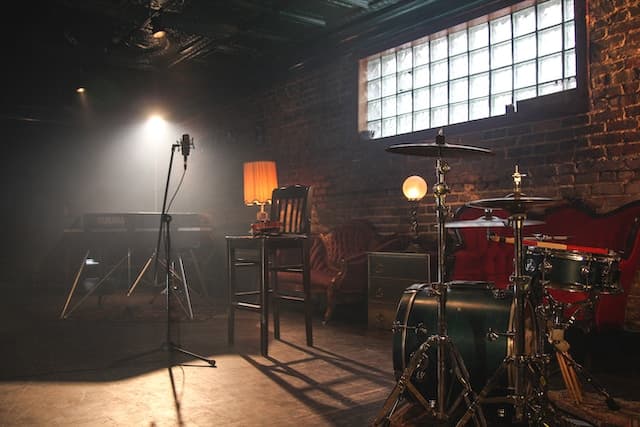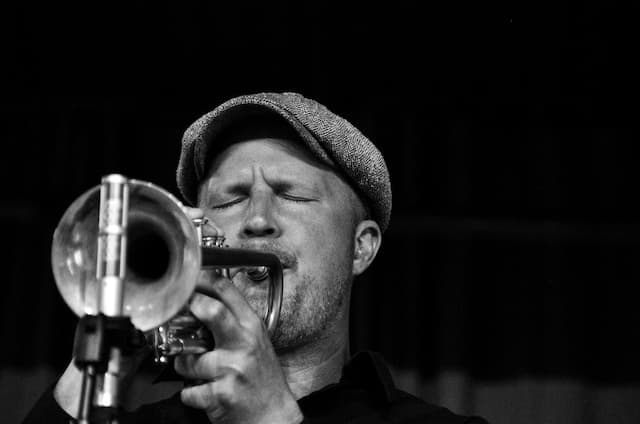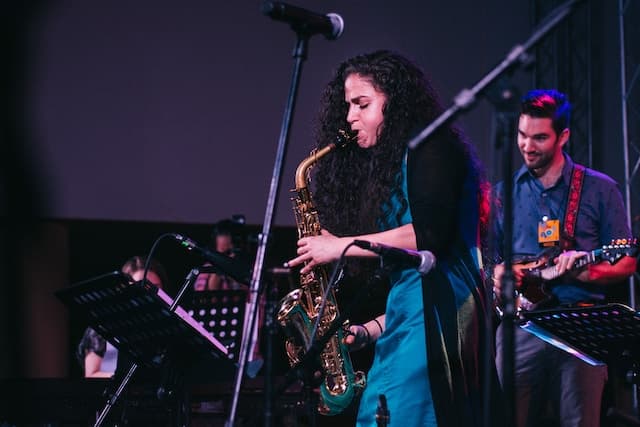Ear Training for Jazz Musicians – What You Need to Know

There are many different musical genres, and ear training skills would be useful no matter which one you focus on. If you’re a jazz musician, though, it’s especially important to follow a top-notch ear training method. This is because a lot of jazz music involves off-the-cuff improvisation, as well as advanced harmonic structures, varied rhythms, and more. Skills like these can be developed by anyone, but only with the right ear training method. If you want to be able to play jazz music with ease and creativity, just keep reading – there’s plenty of practical information below.
Introduction to jazz ear training
What is ear training? Jazz ear training teaches the same skills as guitar ear training, or any other type of ear training. Regardless of your skill level, music ear training is a must if you want to develop the spontaneity in melodic improvisation that goes hand-in-hand with jazz music.
One of the key characteristics of a masterful jazz musician is the ability to improvise complex melodies, harmonies, and rhythms. Sometimes this is done as a solo musician, but in many cases they’re improvising as part of a group. Other essential skills for jazz musicians are transcribing music on the fly, and the ability to learn music solely by ear so that they can easily interact with other musician’s ideas in real-time. These are helpful skills for any musician to have, but jazz musicians are especially likely to need them when playing at an advanced level.

How to start training your ears as a jazz musician
Just like with any other type of musical ear training, it’s crucial to start with exercises that are appropriate for your current skill level. It’s great to have a goal of becoming an expert jazz musician, but it’s just as important to remember that there are a lot of basic and intermediate skills that you’ll have to develop before you reach an advanced level. By the time you’ve developed your own fluent improvisational style of jazz, you’ll have also developed a solid foundation of ear training skills in many other areas.
In addition to starting at the right level, you also have to use the right jazz ear training method. If you want to see consistent progress from the very beginning, you’ll need to choose an ear training method with a proven track record of success. How can you make sure you’ve chosen the best one? Here are some of the most important characteristics to look for:
-
It takes each student’s current skill level into account. Some students are starting from the very beginning, while others already have a solid foundation in ear training for musicians. However, traditional ear training methods (especially interval-based methods) aren’t designed well enough to do this. The interval method inadvertently requires students to complete overly complicated exercises, which the students typically don’t have the skills to perform or understand. This is because these exercises ask students to identify intervals without the presence of a clear tonal center, which is a very advanced musical task to perform. As a result, beginner and intermediate students may blame themselves for not being able to grasp these advanced exercises, and quit out of frustration.
-
It follows a step-by-step approach, with exercises that go from basic to advanced according to the student’s progress. Many ear training methods don’t do this, which results in students blaming themselves when they’re unable to grasp overly complex exercises.
-
It follows a tonal approach, not the atonal approach of interval-based ear training, or the unstructured trial-and-error approach. These last two methods have been proven to be ineffective many times over, so it’s important to avoid using them if you want to see real results. Using an ear training method that follows a tonal approach is key, because this is in alignment with the way our brain perceives musical pitch.
Atonal exercises (like interval recognition exercises and similar exercises) don’t acknowledge the way we naturally experience music, and thus promote the development of clunky cognitive processes that can’t be applied in real musical situations. As a result, they prevent you from developing your intuition, which is the key to understanding music.
On the other hand, the trial-and-error approach isn’t a formal ear training method, but rather a way of practicing that can be just as unproductive as following a faulty ear training course. It starts with the student hearing the notes or chords they’re trying to recognize, and then playing random notes on their instrument until they find the right pitches. This only allows you to develop the most basic ear training skills of all: pitch matching. This means that you won’t develop skills like recognizing chords and notes by ear alone, improvising, etc.

Ear training requirements of a jazz musician
Picture an expert jazz musician in action: they’re weaving in and out of complex harmonies, and adding their own stylistic flourishes to the music. If they’re playing with other musicians, they may take the lead with a few bars of improvisation, or they may follow along with another musician’s improvisation. They always seem to know where the music is taking them, and it can almost sound like they’re having a back-and-forth conversation with their bandmates as they navigate the elaborate rhythms and rich melodies of jazz.
What does it take to achieve this level of skill as a jazz musician? Perhaps the most important requirement would be a comprehensive set of ear training skills. As mentioned before, though, beginner or intermediate jazz musicians can’t take a short-cut by attempting more advanced exercises. If you want to know how to train your ear, one of the most important things to remember is to start at your current level, and work your way up from there. You should focus on developing relative pitch skills, which are essential when playing jazz. Contrary to popular belief, having perfect pitch skills is not a requirement to become a proficient jazz musician. While it is often highly valued, the ability to recognize and reproduce pitches without a reference point can only be developed during early childhood. However, the good news is that relative pitch skills, which involve recognizing the relationship between notes, can be developed at any age and are highly valuable for any musician, regardless of their genre or skill level. However, it’s vital to understand that if you don’t develop beginner-level ear training skills (relative pitch skills), you won’t have a foundation for the more advanced ones. That’s why you have to start from the basics, and work your way up from there.

Another thing to remember: if you choose an ineffective ear training method, you may never find yourself creating the swirling melodies and dancing rhythms of jazz music. For most students of these ineffective methods, it’s almost impossible to progress to their desired level of skill. Either they give up in frustration, or they plateau due to badly designed courses. A great ear training method, on the other hand, will help each student go from one skill level to the next, taking them as far as they want to go on their journey to expertise.
Hearing chord voicings
The ability to hear chord voicings is integral to playing jazz. However, if you’re at the beginning of your music ear training, you’ll have to develop some of the more basic skills before covering chord voicings. These include:
-
Internalization of key’s colors
-
Chord recognition skills (NOT to be confused with identifying whether a chord is maj7, minor 7th, etc.)
-
The ability to identify triad positions by ear (starting with closed position triads, then open position triads)
With these skills in place, hearing chord voicings can actually develop naturally through exposure to the musical language of jazz. Without them, though, the relative complexity of chord voicings will remain a mystery.

Why most ear training tools won’t work
Anyone who wants to pursue ear training in music has literally thousands of options – and that isn’t necessarily a good thing. They could select an ear training course, buy an ear training book, or even get it for free through apps or software.
Unfortunately, the vast majority of these courses will have the same problem: they aren’t actually created by ear training experts. These types of courses aren’t science-based, and they don’t offer any meaningful support to students. Apps and software in particular are likely to be produced by people who don’t have any experience in teaching ear training.
Whether someone is trying to learn guitar or play jazz like a pro, they need a step-by-step, science-based approach to ear training. In order to truly succeed, ear training students need a method that actively guides them in developing their musicality. Ear training for jazz musicians should take into account all of the relevant sub-skills that are involved in performing ear training tasks, rather than assuming that the student has already developed these crucial sub-skills, and leaving them to sink or swim.

An innovative ear training method
The good news? If you’re looking for an ear training method that avoids these common problems and guides you directly to the shortest path for ear training success, you’re in the right place. We saw the same mistakes being made by one ear training method after another, and decided to create the Use Your Ear method to fill the need for effective, science-based ear training that works for everyone, no matter their current level or age.
Choosing our method doesn’t mean you will have run out of options, though; you’ll be able to choose from our free Ear Training Workshop, our Relative Pitch Video Course, and one-on-one lessons from a qualified Use Your Ear instructor.
The free Ear Training Workshop will give you valuable insights into how – and why – the Use Your Ear method works. You’ll learn about the scientific studies that show how our perception of musical pitch works, the same findings that are at the core of our method. You’ll also learn about the exercises that fail to take these findings into account, and why you should avoid them. Plus, you’ll be guided in assessing your current skill level, and taught tailor-made exercises that will help you start your ear training journey right away. Plus, it's totally free for now!
The Relative Pitch Video Course provides much more in-depth instruction, including all the exercises and the entire step-by-step path that has made the Use Your Ear method extremely successful among musicians. Students at any level of ear training can register for this course, and immediately start developing their musicality at the appropriate level for their skills. If you’re determined to learn how to train your ear for music, this course will help you reach your goals.
You don’t have to take our word for it, though; you can also see the improvement of our students and what they have to say. Thousands of music students and musicians have already benefited from our ear training method, whether they were complete beginners, or were coming from other ear training methods that failed to produce results.
One-on-one lessons offer the same quality of course material, but with a private tutor. You’ll have the advantage of real-time feedback and completely customized training, on top of the step-by-step structure of the Use Your Ear method. An ear trainer will not only help you stay on track, but they’ll also motivate you to focus on areas of weakness, resulting in even faster progress.

Final advice for jazz ear training
Plenty of people start their ear training journey with some level of musicality. Others start out believing that they’re too tone-deaf to make any real progress, or wondering which ear is better for music (hint: they’re both great for music!). With a good ear training method, everyone’s questions will be answered, and each student will be able to start with exercises that suit their current skill levels.
The key to learning how to play music by ear is to start with a solid basis. For beginners, this means starting with the most basic ear training exercises. For intermediate students, this means building on the knowledge they already have. No student should have to waste their time on ear training exercises that are ineffective or simply too advanced for them. As they gain confidence, they can move on to increasingly advanced skills. If your goal is to entrance your audience, your friends, or even just yourself with the nuances and unbridled creativity of jazz, maybe it’s time to take the first step with the help of a proven ear training method.

